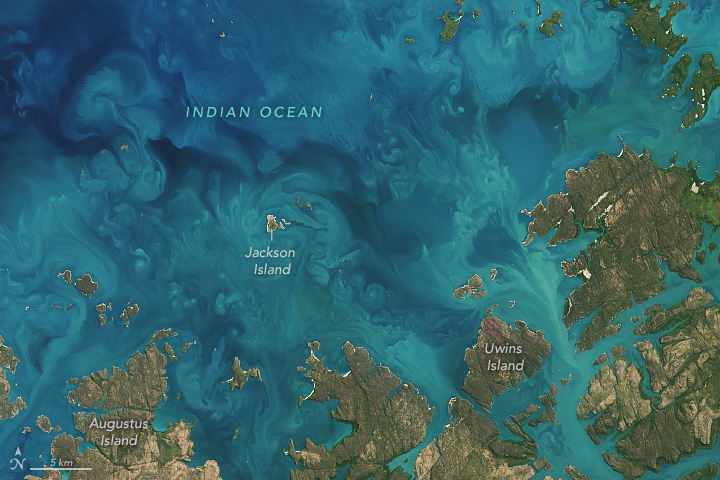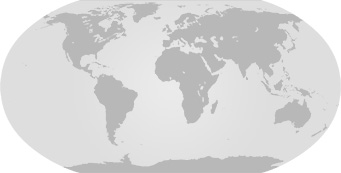The blue-green waters along the coastline of Kimberley, in northwestern Australia, are constantly in flux. The region’s large tidal currents stir up sediment in the shallow waters of the continental shelf to create colorful patterns.
Sediment swirled between rocky islands of the Bonaparte Archipelago, making the water appear turquoise in this image, acquired April 22, 2024, by the OLI (Operational Land Imager) on Landsat 8. Beautiful scenes like this are common off the 20,000-kilometer-long Kimberley coast, which has one of the largest tidal ranges (up to 11 meters) in Australia and the world. The tidal currents stir up sediment from the seafloor and incoming water from Western Australian rivers, generating colorful swirls in the water.
Kimberley has been touted as having one of the world’s least human-impacted coastal zones. The remote area supports a large range of marine habitat types including mangroves, seagrass beds, and coral reefs, which harbor a rich diversity of living things, such as fish, reptiles, marine mammals, and phytoplankton.
Phytoplankton—tiny plant-like marine organisms and the foundation of the marine food web—might also be contributing to the colorful water in this image. Sediment particles in the upper ocean are often bound together with larger phytoplankton, such as diatoms, dinoflagellates, and ciliates. However, it is not possible to discern the density and type of phytoplankton present based on this satellite image alone.
Some modeling studies estimate that climate change may reduce phytoplankton productivity by up to 20 percent by 2100. But in the waters along the Kimberley coast, certain types of these plant-like organisms are thriving. A 2020 study of sediment cores found that the populations of diatoms and dinoflagellates along a large section of the coast have grown by 150 to 300 percent since the 1950s. The authors posited that increases in rainfall and cyclone activity in northwestern Australia leave the waters well-mixed, allowing phytoplankton to flourish.
NASA Earth Observatory image by Lauren Dauphin, using Landsat data from the U.S. Geological Survey. Story by Emily Cassidy.
References & Resources
- Halpern, B. S., et al. (2008) A global map of human impact on marine ecosystems. Science, 319(5865), 948-952.
- McLaughlin, M. J., et al. (2019) Biophysical oceanography of tidally-extreme waters of the southern Kimberley coast, Western Australia. Continental Shelf Research, 173, 1-12.
- NASA Earth Observatory (2024, May 18) Montgomery Reef Revealed. Accessed June 14, 2024.
- NASA Earth Observatory (2023, April 30) Mangroves on Eighty Mile Beach. Accessed June 14, 2024.
- Steinacher, M., et al. (2010) Projected 21st century decrease in marine productivity: a multi-model analysis. Biogeosciences, 7(3), 979-1005.
- Western Australian Museum Marine Life of the Kimberley Region. Accessed June 14, 2024.
- Yuan, Z. et al. (2020) Phytoplankton responses to climate-induced warming and interdecadal oscillation in North-Western Australia. Paleoceanography and Paleoclimatology, 35(3).


